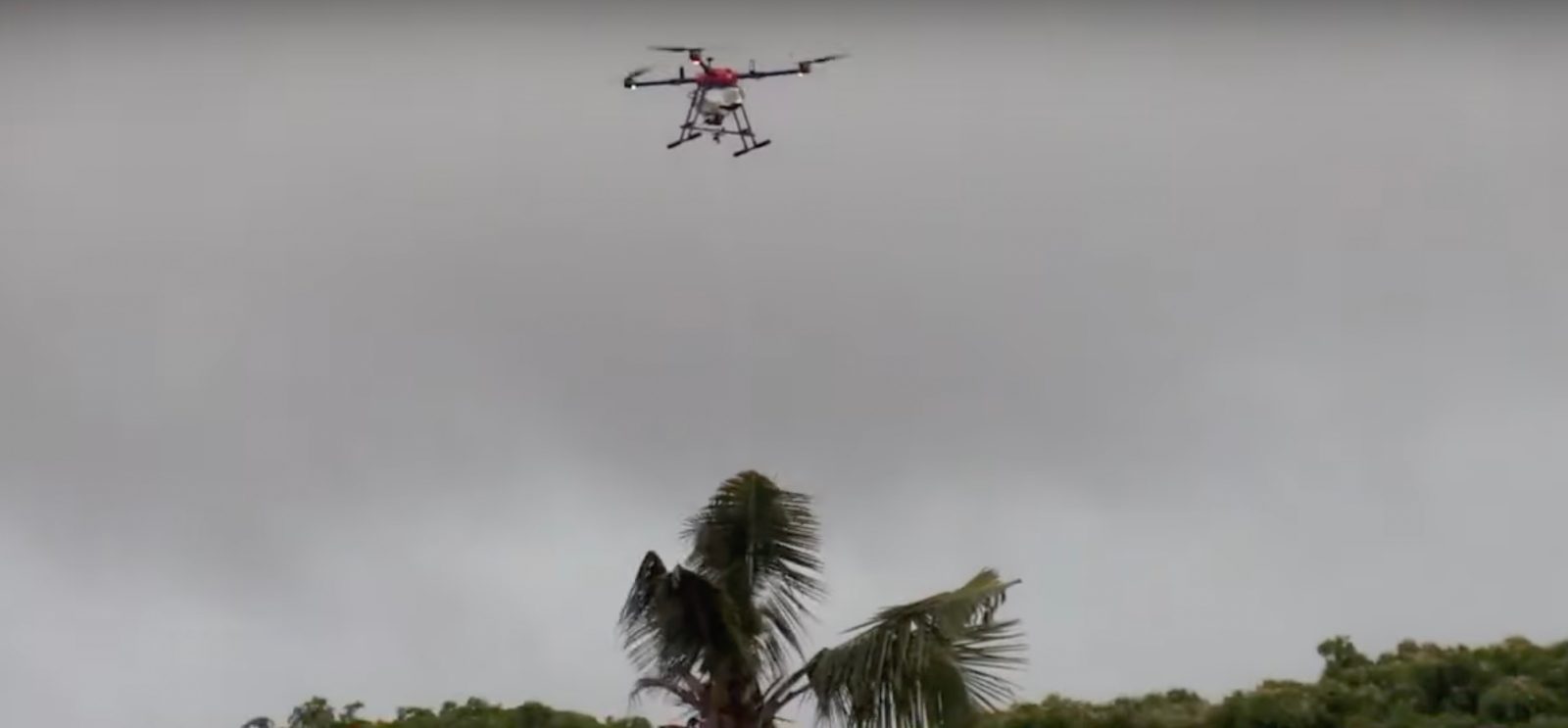
Hawaii may seem like a tropical paradise to many, but its climate and location make it vulnerable to some rapidly growing and destructive invasive pests – a reality officials are now dealing with by deploying drones to battle a species of rhinoceros beetle ravaging the archipelago’s iconic coconut trees.
Led by researchers at the University of Hawaii at Mānoa, drones are being flown to conduct targeted sprays of coconut trees showing signs of rhinoceros beetle infestation. The non-native pest has no natural predators in the islands, and thus has been left unchecked as it gnaws to death a range of plants – including betelnut, Pandanus palms, banana, pineapple, and sugarcane. Given the economic and merely aesthetic damage that has inflicted on some of the islands’ trademark flora, officials have decided to deploy insecticide-shooting drones as the insect’s enemy-designate.
Growing up to nearly 2.5 inches in length, the horned pest looks like a mini-Styracosaurus, and is capable of the kind of flight that justifiably freaks people out when the armored critters bash into them in the dark. The coconut rhinoceros beetle uses its horns to hook into its botanical prey – usually coconut and palm trees, but other plants will do in a pinch – and start cutting their way through fronds or leaves to reach the meristem, or living core of the plant. Unless discovered and eliminated, the pest will eat the life right out of its host.
To prevent that from happening, state officials have been relying on the work of University of Hawaii at Mānoa researchers testing drones to both detect and neutralize coconut rhinoceros beetles in targeted trees.
Though the insects can also be identified at the base of attacked trees or from damage done to fronds, drones have permitted pilots to discover the exact location of rhinoceros beetles high up in coconut and palm trees, and undertake targeted spraying to kill them.
Following a recent trial of the aerial technique at the Hawaii Country Club on Oahu, molecular biosciences and bioengineering professor Dan Jenkins said use of UAVs to battle the parasite had proven much more effective than previous methods of laying traps or injecting insecticide into plants under attack.
“Most of the trees were defoliated enough that we really applied directly in the crown,” said Jenkins, who checked back a few days later to see the results. What he discovered were a large and growing numbers of dead coconut rhinoceros beetles each day, indicative of the increased efficiency of drones spraying insecticide directly when the critters were active.
“One observation is that virtually all of the beetles we found were at the bases of trees that had no other vegetation or long grass at the base, so I would think that we killed at least double what we were able to find,” Jenkins added.
Read: Darwinian drones rid Galápagos Islands of invasive rats
Data collected from continued monitoring of trees treated at the golf course will allow Jenkins and his team to further assess the success of drone deployment against coconut rhinoceros beetles, and create models for how the technique may be used on a larger scale across Hawaii.
FTC: We use income earning auto affiliate links. More.



Comments